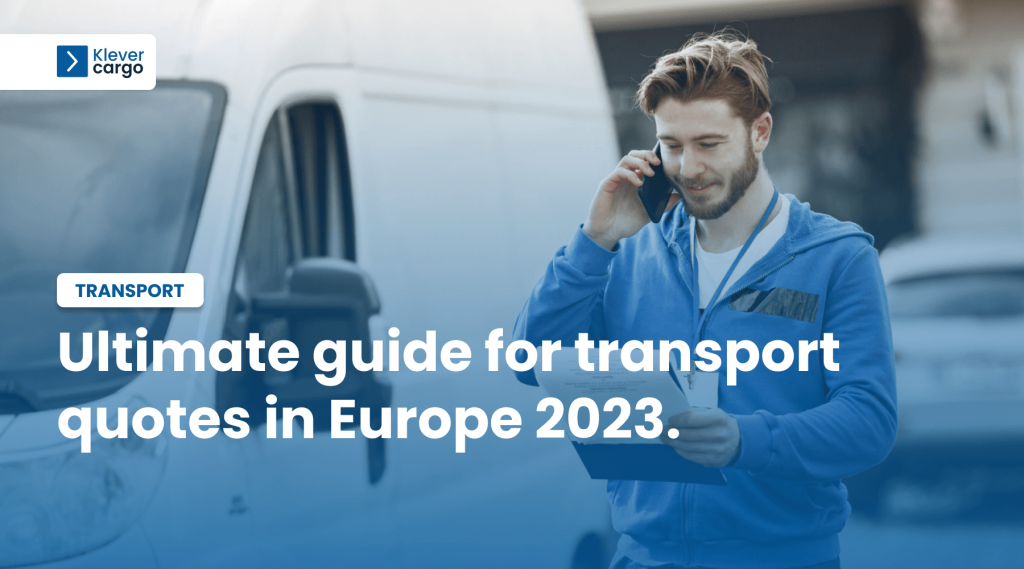Route optimisation refers to creating optimal (fast, reliable, and cost-effective) routes. These features are of utmost importance in freight forwarding and transport in general.
As a concept, it’s essential for managers in logistics. They often deal with freight forwarding, dispatchers, and transporters who wish to cut costs and improve revenue.
In the following paragraphs, you can learn more extensively about the meaning of route optimisation. Also, you can find out who needs route optimisation and how route optimisation works.
Route optimisation meaning

Route optimisation aims to improve logistics flows. It uses software to find the best and most cost-efficient road transportation routes for freight transport.
In other words, it’s about optimising routes, which doesn’t exclusively imply finding the shortest routes.
For a route to be optimal, several crucial factors are considered:
1. An optimal route has several stops that take less time to complete.
2. Additional factors that affect the optimal aspect of a route include distinct variables such as:
- delivery time windows,
- weight and volume of the vehicle load capacity and
- the drivers’ schedules with their or hub’s proximity.
3. It also considers real-life occurrences such as:
- traffic congestion,
- road accidents and
- the proximity of the stops.
The route optimisation process is more than simply calculating cost per mile. Instead, it’s about carefully considering all the aforementioned aspects before setting the route.
Who needs route optimisation?

Businesses that feature fleet delivery and field service businesses. They’re the ones that highly benefit from optimising routes.
Dispatchers and route planners effectively use optimisation software in the route planning process. An optimal route assigned to a driver reduces the time needed for the delivery and the amount of fuel needed. Therefore, all businesses, even smaller ones, can benefit from route optimisation software.
It can increase profit and enhance the customer experience, which is crucial for long-term success. Businesses that need to plan for 20 to 30 stops a day often see the most value in using route optimisation software. As well as those who wish to use more advanced delivery management features like customer notifications.
The most common users of route optimisation software are:
- couriers,
- businesses that make deliveries and
- organisations that make sales.
If you’re wondering whether you need route optimisation software, you can find that out by looking at various signs.
Clear signs that your business would benefit from using a route optimisation software:
-
Inefficient time management
Much time is wasted on planning and dispatching routes that are still not the most optimal they can be.
-
Delayed delivery notifications
You learn about late deliveries only when an unsatisfied customer contacts you.
-
Uninformed customers
Customers constantly call you to check their delivery status.
-
Cost-inefficiency
You worry about the considerable fuel and driver wage costs.
Being eco-friendlier in your deliveries is essential to your business.
-
Inefficient deliveries
You feel that your delivery experience is not the best it can be.
How does route optimisation work?

Finding an optimal route is a complex process. The software uses computer algorithms to compare different routes in a matter of seconds and choose the most optimal one. In comparison to planning which is solely about planning a route considering available roads.
Real-world benefits of route optimisation come from solving abstract mathematical problems. These problems are in the form of many factors mentioned in the first paragraph. Machine learning is used to solve them by evaluating historical route data.
This algorithm leverages Artificial Intelligence. It chooses the fastest route and makes a selection of the most optimal one.
Regarding the two significant issues in route optimisation, there is the Travelling Salesman Problem or TSP and the Vehicle Routing Problem or VRP. The main aim of using software for this operation is to minimise costs and maximise deliveries.
Why is route optimisation necessary?

Efficient delivery routes are crucial for businesses looking to save money and overcome logistical issues while predicting future scenarios. Optimising these routes brings a high level of operational efficiency to your business, and it’s also reflected in saving money, overcoming challenging logistic problems, and helping your business predict potential future scenarios.
What route optimisation software brings a business using it:
-
Flexibility
Route optimisation software provides you with an optimal route needed for your business needs. Your business needs depend on the type of business you own. It should solve your business constraints.
-
Reduced costs
Using route optimisation software actively reduces running costs. Those include fuel, vehicle maintenance, and downtime.
-
Enhanced customer experience
As customers make your business run and be successful, you need to provide them with an enhanced customer experience. You can do that easily by incorporating route optimisation software in your business. You can keep your customers updated about their delivery status in real-time.
-
Managing schedule changes in real-time
Using advanced route optimisation software allows you to manage any ongoing schedule changes in real-time. This is a real-time and cost-saver. When unforeseen circumstances and accidents happen, the routes are updated instantly. Then, drivers get notified of these updates in real-time, so they don’t need to figure out where to go next – the software does it for them.
-
More daily faster deliveries
You can make more daily deliveries by having optimal routes. More deliveries mean more business and hence, more profit. However, it also means potentially overscheduling. It can cause your drivers to burn out and customers to get annoyed by waiting a long time for deliveries. The route optimisation software also notifies you if you need more drivers to complete deliveries in specific time windows.
-
Improved driver satisfaction
Having software that does all the hard work and optimises routes for you takes the pressure off drivers. Their only job is to drive the route that was carefully calculated. You eliminate problems such as long delays, incomplete deliveries and overlapping delivery territories.
Which solutions can make route optimisation easier/better?

Several solutions can make route optimisation easier and/or better. They include investing in specific software that finds the most optimal route for you. Also, working with an independent logistics provider and hiring dispatchers to manage drivers.
-
Invest in route optimisation software
It’s nearly impossible to manually factor in all the variables when calculating the most optimal routes. If done manually, there is plenty of room for human error in optimising routes. So, if you want to avoid mistakes that can lead to unnecessary miles driven, fuel spent, late deliveries, and thus more costs – the solution is simple. The best way to optimise a route is to invest in software. Investing once in software like this will keep your customers and drivers satisfied. It will also increase safety and provide you with better data analysis. This can only result in a growth of your earnings, meaning that software for route optimisation pays for itself quickly.
-
Work with an independent logistics provider
If you don’t want to map out efficient routes daily, you can hire an independent logistics provider to deal with these things. They offer customised delivery services tailored to your needs. This is an ideal option for repeating routed deliveries. Working with an independent logistics provider focusing on creating optimal routes, you can concentrate on dealing with other things.
-
Hire dispatchers to manage drivers
Another solution to improve route optimisation is hiring dispatchers to manage drivers. The aim of hiring such a team is to manage drivers and their routes by improving coordination to be more efficient in making deliveries. The point is to keep drivers active and moving, promoting both driver and customer satisfaction.
What can happen if you don’t prioritise vehicle route optimisation?

A business can perform poorly if vehicle route optimisation isn’t prioritised. First, there is a noticeable lack of real-time tracking, which isn’t the case when using software that optimises routes. Also, delivery productivity is at a lower level. Moreover, you can frequently deal with the inability to ensure on-time deliveries. Late deliveries will ultimately lead to poor customer experience. What’s more, the overhead costs are higher, and there is a lack of ETA adherence.
As far as mapping out routes manually is concerned, it’s far less efficient than using AI software to do it for you. This technology is so advanced that it can’t compare to manual route mapping. Dealing with delivery volume growth and creating routes manually will take up much time. Also, it won’t be as efficient as when software does it for you.
Route optimisation software is a game-changer
Incorporating route optimisation software in your business that relies heavily on logistics and delivery can only bring you benefits in a short period. Join our platform and register to use all its benefits. Upon registration, you can close the deal directly on the platform and get generated documents such as contracts and CMRs. After you verify your profile, you can find cargo and transport, depending on your needs. As far as your company’s identity is concerned, it’s protected until closing the deal. Also, the platform only shows the radius from where freight needs to be shipped without the exact address. Check out the KleverCargo full platform tutorial.


